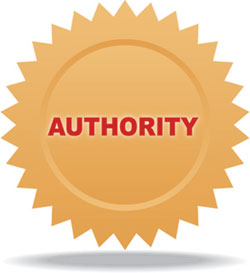
It’s not easy to present a strong, unified brand across all media. In fact, this is one of the most pressing creative challenges marketers face today.
That’s because some, having started businesses as websites, print catalogs or retail stores, may tend to focus on the channels in which they feel most confident and comfortable. Others may be slow to embrace alternate media because of limited resources or an older customer base.
Achieving brand harmony requires committing time and resources within the context of a logical, well-organized approach. Here’s a guide to the cross-channel branding activities that marketers should have in place, plan for, or at least give serious consideration.
Educate:
Establish a deep, actionable brand understanding
Inadequate employee understanding of the brand and its positioning is by far the most common impediment to cross-channel alignment. In many cases, there is no clear or unified communication of the organization’s core promise to the customer or the brand personality.
Different interpretations of the brand can exist within the same company — and often, these emanate from top management. Such fundamental confusion will obviously permeate all channels.
Successful branding is based on analysis and strategy. This starts with creation of a written brand identity statement that clearly defines the brand’s positioning and personality, and is both meaningful and actionable.
A statement that’s wordy and full of jargon and fluff, or that promises too much, is meaningless and even counterproductive. The same is true for statements that are too short and general.

A carefully crafted brand statement captures the essence or meaning of the brand’s promise and its special relationship with its customer in language readily translatable to day-to-day actions.
If you want your brand statement to be truly effective, you must actively incorporate it into the company’s daily activities and discussions, and make it the foundation and point of reference for all that transpires. Companies that understand their brands refer to the statement to address all kinds of situations that crop up in the course of business. They ask: “How does our brand promise determine how our company should handle this?”
Can you clearly sum up your own brand’s promise and convey it to all in your company? If you find yourself struggling with this, analyzing and working through it with input from your team can provide the essential foundation for strong, cross-channel branding.
Employees must understand their roles and how the promise determines their communications, in specific terms, with the customer or prospect. They need training and ongoing communication and reinforcement from supervisors and top management.
Communicate:
Break down silos, build in interaction points

Company structures vary, but many have separate departments handling Internet and print channel activities, reflecting the respective skillsets required for these media. The problem is, businesses often fail to create effective communication systems that enable the departments to share information, interact and contribute to each others’ efforts.
To establish an efficient system, you need a strong senior person in place with oversight and authority spanning the departments. The manager must have a sophisticated understanding of the brand and branding objectives, be backed by the full support and clout of the company, command the full respect of both teams, and be adept at championing interaction and facilitating cross-channel opportunities.
Then you must spell out specific interaction points and incorporate them into the calendar. For example, communication opportunities might include:
- a monthly review of performance by channel, with presentations made by various channel leaders;
- rotating presentations and discussions of new creative considerations by channel leaders;
- presentations by customer service as the basis for cross-channel discussions of customer likes, dislikes, questions, concerns and frustrations;
- a biannual brand and creative critique of cross-channel activities by an outside consultant or agency; and
- an annual strategic meeting to discuss the brand and existing and planned branding activities. (If possible, this should be conducted off-site for a day, with a leader.)
In addition to scheduled communications activities, the senior manager should expect and encourage team members to engage in opportunistic cross-pollination activities. This might include an Internet designer attending a catalog layout meeting or a catalog art director attending a web photo shoot.
Create:
Develop a cross-channel branding plan and activities
Once you’ve created a statement defining the brand’s positioning (or promise to the customer) and identity (or personality), it’s time to identify branding elements and how they can be used or interpreted within each medium, across channels, to ensure a consistent, familiar customer experience.
Here are the elements you’ll need to address:
DESIGN ARCHITECTURE

Overall design structure or architecture is a critical component to customer brand recognition. But achieving a consistent brand look across media with varying functional and technology requirements can be challenging.
Catalogs have page density requirements, but offer greater design flexibility than websites. Websites need to be more structured, but because of their lower creation costs you don’t have the same pressure to pack merchandise onto a page. Email and mobile media have considerably more tech and creative limitations.
Nevertheless, a conscious effort at cohesiveness can bring overall design into better alignment. It helps to work with a brand-conscious designer experienced in multichannel marketing to establish templates and guidelines. But you can make significant improvement by analyzing and emulating other marketers’ successful designs.
TYPE
Type fonts play a big role in branding. Type choices can and should be used to convey much about the brand and who you are, as well as contribute to consistency and recognizability across media.
A brand positioned as modern, conservative, promotional or premium/upscale can easily find fonts that support and reinforce those positions (e.g., san serif, serif, bold with color or ultra thin, respectively).
But websites, phones and emails have much lower resolutions than print, so legibility and readability — as well as easy clickthrough design — are important considerations in by-medium body-type font choices, in particular. In some channels, it may be best to incorporate your brand’s recognizable or signature fonts in headlines and lead-ins, where ease of reading is less of an issue, and to use more functional fonts in body text.
COLOR
Used effectively and consistently across channels, color — particularly in a logo — is a powerful brand signature that evokes immediate recognition.
While people do tend to associate a brand with one dominant color, strong brand color schemes generally employ at least two hues consistently. Tiffany’s complements its signature eggshell blue with white type/elements, Godiva pairs its rich gold with black, and Staples’ logo uses reverse white type on a red mortise.
Establishing a strong, brand-appropriate color scheme for the logo and key design elements and sticking with it is a must for strong cross-channel branding — far more important than bowing to an art director’s desire to change colors (for instance, to match the logo to a background).
PHOTOGRAPHY
Reconciling or aligning photography across channels is a tough one, given that different media require different styles and formats. The biggest factor here is backgrounds.
On the web, backgrounds tend to distract and detract from the product. (Apparel businesses learned early on that website sales were enhanced by product shots set against a simple studio backdrop or seamless paper.)
In contrast, catalog presentations often benefit from location photography that adds interest, a sense of place or product context/use suggestions.
Because many customers are still driven to websites by print catalogs, it’s important to avoid a visual disconnect between how a product appears on the printed page and how it appears on a computer screen. This is particularly true with apparel and other categories in which emotion is a major determinant in the purchase decision.
Leverage authority builders:
Tools that encourage and assist consumers in shopping, techniques that differentiate you from the competition, and activities that are relevant and recognizable can all enhance brand authority and cross-channel consistency. A unique and relevant authority signal will grab customers’ attention, hold their interest, and get them to buy and come back for more. There are many ways to do this; here are five tactics to consider:
INFORMATION
Make full use of one of the biggest benefits of cross-channel marketing by employing more limited media such as print, email and mobile to drive consumers to the web. Include snippets or call-outs with the URL to let customers know that there’s more on the website.
Cookware retailer Williams-Sonoma, for instance, has established its site as an important resource for recipes and cooking. Pet care merchant Doctors Foster and Smith provides columns in its catalog and more in-depth articles on its site.
Party novelties mailer Oriental Trading Co. offers party-planning guides on its site. And general merchant Spiegel provides fashion tips in print and offers its own Signature Style magazine on its site. The magazine enables customers to read and click through to buy products or access YouTube fashion and how-to videos.
ENTERTAINMENT
This type of content is increasingly prevalent. While it may not directly drive sales, content that’s fun or interesting and demonstrates customer insight can encourage return visits/engagement and help build relationships. And done well, it may create an urge to explore products that in turn leads to a sale.
The web and mobile apps are perfect for this purpose, although it wouldn’t be surprising to see more print catalogs experimenting with making a bit of room for relevant, lighthearted activities as well.
Industrial supplier cataloger New Pig offers a link into “fun and games”; outdoor gear and apparel merchant Patagonia creates community through customer blogs and Twitter links; and home decor mailer Frontgate offers an International Home Tour through its partnership with Architectural Digest and Sotheby’s International Realty.
COMMUNITIES AND SOCIAL MEDIA
Although these activities tend to be entertainment-driven, the sharing also provides an informational/problem-solving benefit that rubs off on your brand and enhances its authority.
Brand-created communities are increasingly common, for good reason: Facilitating non-commercial discussions and involvement in meaningful, relevant activities or causes enhances consumers’ respect for and goodwill toward the brand and its company. The community may be local or global, enabling the brand to tailor its outreach and relationship-building.
Encouraging customers to “become a [Facebook] fan,” or “see it on YouTube” or “get it on your phone” are all ways to engage them, become a part of their lives and enhance your brand’s relevance. It’s relatively simple and very effective to provide social media clickthroughs online and in emails, as well as let fans follow you on Twitter.
But keep in mind that these tactics require resources and conversational know-how, so do not embark on them lightly. Once you have established you social media presence, be sure to include cross-references or reminders, data snippets and URL mentions in print.
RATINGS
Ratings help clinch the purchase decision, in no small part because consumers believe other customers over the marketer — particularly in regard to products that have performance features. Quick, at-a-glance star-rating systems have proven highly effective across channels.
SEARCH
Offering sophisticated search capabilities — go-to destinations or resources that showcase expertise and generate goodwill through useful service — can do much to reinforce brand authority, and that authority benefits performance across channels.
When it comes to facilitating ease of shopping, few if any do a better job than Amazon.com. Not only can consumers find virtually all types of products there; the online giant’s site is super-easy to navigate. What’s more, the transaction-based additional purchasing suggestions provided on-site and by email clearly work like gangbusters.
Another aspect of search is comparisons, which come into play when the shopper is asked to choose from among similar products. In catalogs, this might be presented as a “good, better, best” format. On a site, it might be translated into a direct comparison of attributes of selected products.
Creating cross-channel brand alignment isn’t easy. This strategic, multifaceted and never-ending process involves creative yet disciplined engineering and design, employee communication, access to critical marketing information and merchandising excellence.
And even when you have the main elements and activities in place, you need to revisit them over time and reinforce them every day.
Glenda Shasho Jones ([email protected]) is a New York-based catalog and branding consultant.